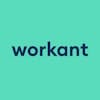Managing employee schedules can be challenging, especially when balancing different shifts, availability, and operational needs. Efficient shift planning is critical to ensure productivity, reduce downtime, and keep employees satisfied. In this guide, we’ll walk through the key strategies to optimize workforce scheduling and ensure smooth business operations.
Automate and Streamline the Scheduling Process
Manual scheduling can lead to errors, confusion, and miscommunication. By leveraging automated shift planning tools, you can significantly reduce the time spent creating and managing schedules while minimizing mistakes.
⚡ Quick Shift Assignments: Automate shift allocation based on employee availability and role, ensuring you’re never short-staffed.
📆 Drag-and-Drop Scheduling: Quickly modify schedules, swap shifts, and accommodate last-minute changes with an intuitive interface.
Explore how Workant’s Shift Planning Module simplifies the entire scheduling process for managers and employees alike. For more insights into scheduling automation, Capterra’s guide on scheduling software offers a great comparison of the best tools available.
Minimize Overstaffing and Understaffing
Balancing workforce requirements with employee availability is key to maintaining productivity. Smart shift planning tools analyze historical data, business needs, and employee availability to minimize both overstaffing and understaffing, ensuring the right number of employees are on hand at all times.
🔍 Data-Driven Scheduling: Use historical data to predict peak times and staff accordingly.
📉 Reduce Idle Time: Prevent overstaffing during slow periods and underutilized employees by balancing shifts more effectively.
For insights into smarter scheduling, check out Workant’s Advanced Shift Planning to keep your team on track and your operation running smoothly. HR Dive also highlights the impact of smart scheduling on workforce productivity.
Improve Employee Flexibility and Satisfaction
Flexible scheduling leads to higher employee satisfaction, reducing turnover and improving performance. Give your team more control by allowing them to indicate their availability, request shifts, and swap shifts with co-workers—directly from the platform.
🤝 Empower Employee Shift Preferences: Let employees select preferred shifts, reducing conflicts and improving morale.
🔄 Easy Shift Swapping: Allow employees to request and swap shifts with their colleagues through an automated system that still maintains manager oversight.
Discover how Workant’s Flexible Scheduling Tools create a more engaged and satisfied workforce by offering flexibility. For further reading, check out Harvard Business Review’s article on the benefits of flexible shift scheduling.
Real-Time Updates and Notifications
Miscommunication about shift changes can lead to chaos and low morale. Real-time updates and automatic notifications ensure that employees and managers stay informed about changes to the schedule, avoiding confusion or missed shifts.
📲 Instant Notifications: Employees receive real-time updates about schedule changes, approvals, or requests, ensuring they are always up to date.
📧 Manager Alerts: Managers are immediately notified of any requests or changes, allowing them to make swift decisions.
Keep everyone in the loop with Workant’s Real-Time Shift Notifications for smooth operations and clear communication.
Optimize Resource Allocation for Peak Productivity
Efficient scheduling isn’t just about having the right people in the right place—it’s also about ensuring that resources are being used wisely. By analyzing employee availability and business needs, shift planning software can allocate resources more effectively, resulting in optimized operations and reduced costs.
📊 Track Workforce Trends: Use analytics to monitor and improve scheduling efficiency, ensuring that high-demand periods are adequately staffed.
🛠 Reduce Operational Costs: Avoid unnecessary overtime costs and ensure that resources are being allocated where they are needed most.
Find out how Workant’s Workforce Analytics can help you optimize scheduling and resource allocation for better business performance. You can also explore the Society for Human Resource Management (SHRM) for additional best practices on resource allocation and workforce planning.
Conclusion
Effective shift planning is key to maintaining operational efficiency and a satisfied workforce. By automating scheduling, providing real-time updates, and optimizing resource allocation, you can ensure that your business runs smoothly and your employees are happy. Ready to streamline your scheduling process? Try Workant’s Shift Planning Module today.

